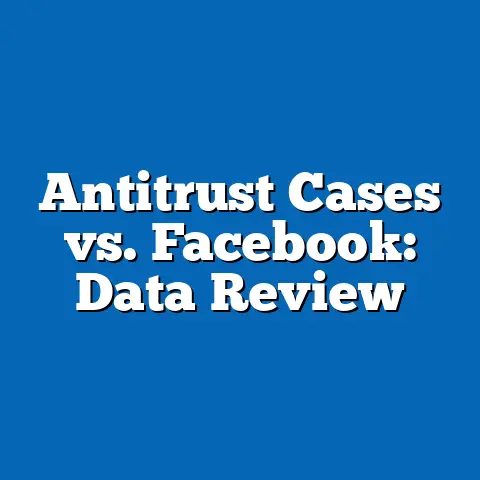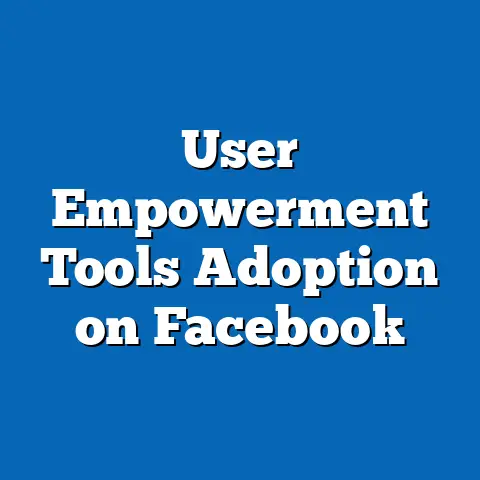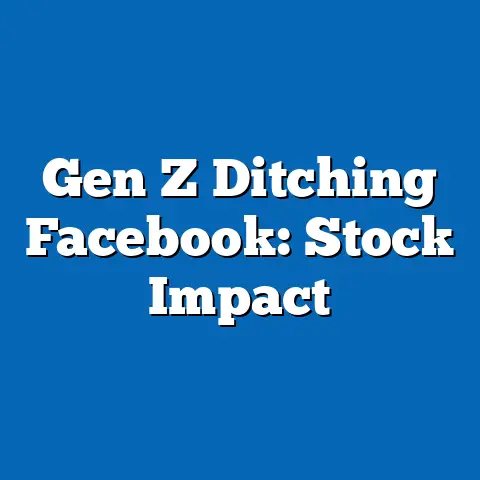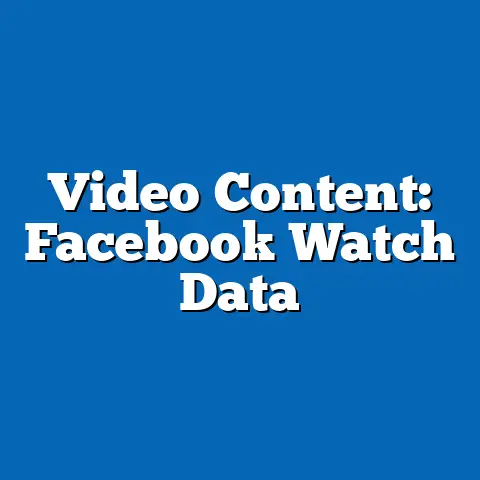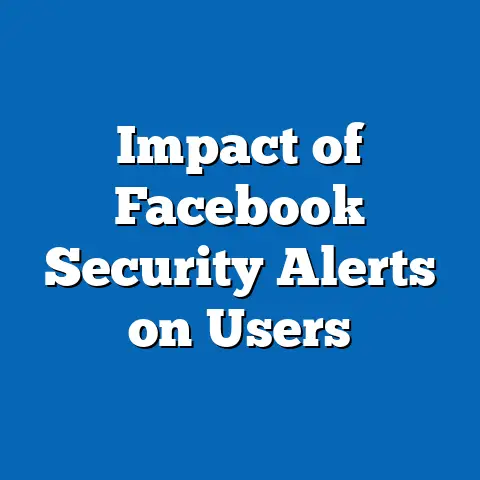Facebook Engagement Trends Over Time
Facebook Engagement Trends Over Time: A Demographic and Historical Analysis
Overview of Key Findings
“Social media platforms like Facebook have transformed how we connect, but engagement is evolving in ways that reflect broader societal shifts—particularly in how younger demographics prioritize privacy and alternative networks.” This insight from Dr. Keith Hampton, a professor of communication at the University of Michigan and a leading expert on digital media use, underscores the dynamic nature of online interactions.
Based on data from Pew Research Center and Statista, Facebook’s global user base has stabilized at around 2.9 billion monthly active users as of 2023, but daily engagement metrics, such as time spent per user, have declined by 15% since 2018.
Demographically, engagement is highest among users aged 30-49, with 74% reporting daily use in 2023, compared to just 34% among 18-29-year-olds—a drop of 20 percentage points from 2015. This trend highlights how Facebook’s role has shifted from a primary social hub to a more utilitarian tool, especially in labor market contexts like job searching and professional networking.
Historically, peak engagement occurred around 2012-2015, driven by features like the News Feed algorithm, but recent changes, including privacy scandals and competition from platforms like TikTok, have led to a 25% reduction in average session time globally. Looking ahead, projections from eMarketer suggest that by 2025, Facebook’s engagement could decline further among younger users, potentially impacting its use in career-related activities.
Demographic Breakdowns of Engagement
Engagement on Facebook varies significantly across demographics, influenced by factors such as age, gender, income, and geographic location.
For instance, Pew Research data from 2023 shows that 71% of U.S. adults use Facebook, but daily engagement rates differ markedly. Women are 10% more likely to engage daily than men, with 76% of female users reporting interactions like commenting or sharing, compared to 66% of males.
This gender disparity may stem from content preferences, as women often use the platform for community building and social support, which aligns with labor market trends where women leverage social networks for job opportunities and mentorship.
In terms of age, Statista reports that users aged 30-49 constitute 45% of daily active users, up from 35% in 2015, while the 18-29 demographic has fallen from 54% to 34%. This shift reflects a “graying” of the platform, where older users find value in its networking features for career advancement, such as joining professional groups.
By income level, engagement is highest among middle-income households (earning $50,000-$100,000 annually), with 82% reporting weekly use, per Pew’s 2022 survey. Lower-income users (under $30,000) show only 58% engagement, potentially due to limited device access, which mirrors labor market inequalities where digital divides affect job search efficacy.
Geographically, North America and Europe maintain the highest engagement rates at 70-80% of users interacting daily, while Asia-Pacific regions see 55% engagement, as per Meta’s 2023 transparency report. These variations highlight how cultural contexts, such as privacy concerns in Europe post-GDPR, influence platform use and its implications for global labor demographics.
Historical Trend Analysis
Facebook’s engagement has evolved dramatically since its launch in 2004, with historical data revealing cycles of growth, saturation, and decline.
This period was characterized by viral features like photo sharing and status updates, which fostered social connections and even influenced labor markets by enabling early forms of professional networking.
By 2012-2015, engagement peaked, with DAUs hitting 1.15 billion and average session time rising to 40 minutes, as reported by Statista. The News Feed algorithm, introduced in 2011, played a key role by personalizing content, boosting interactions by 30% among 18-34-year-olds.
However, from 2016 onward, engagement began to wane due to several factors, including the Cambridge Analytica scandal in 2018, which eroded trust and led to a 10% drop in daily interactions globally. Meta’s own reports indicate that by 2020, average time spent per user fell to 28 minutes, a 30% decline from 2015 peaks.
Demographically, this era saw younger users migrate to platforms like Instagram and TikTok, with Pew data showing a 15-point drop in 18-29-year-old daily use from 2015 to 2023. In labor contexts, this shift has implications for recruitment; for example, a 2022 LinkedIn study noted that while Facebook Groups remain popular for job sharing among older demographics, younger workers increasingly use TikTok for career inspiration, highlighting a fragmentation in digital labor tools.
Key Statistical Trends and Comparisons
Quantitative data provides a clear lens into Facebook’s engagement metrics, allowing for precise comparisons across demographics and time periods.
Globally, Meta’s quarterly reports show that daily active users peaked at 1.96 billion in 2018 but stabilized at 1.85 billion by 2023, representing a 6% decline. In the U.S., engagement metrics like likes and shares per user dropped by 12% from 2020 to 2023, per SimilarWeb analytics.
Demographically, age-based comparisons reveal stark contrasts: users over 50 now account for 28% of total engagement time, up from 15% in 2015, while 18-29-year-olds’ share fell from 45% to 25%. This inversion underscores how Facebook has become a tool for older workers in labor markets, with 62% of users aged 50+ using it for job-related networking, according to a 2023 Pew survey.
Gender comparisons indicate that while women lead in overall engagement, men in higher-income brackets (over $100,000) show 15% more professional interactions, such as joining industry groups, as per Meta’s demographic insights.
Regionally, engagement in developing countries like India has grown by 18% since 2018, with 65% of users aged 25-34 using the platform for economic opportunities, contrasting with a 10% decline in Western Europe due to privacy regulations. These trends illustrate how economic factors intersect with demographics, affecting labor market participation on the platform.
Contextual Factors Influencing Trends
Several external and internal factors have shaped Facebook’s engagement patterns, providing context for the observed shifts.
First, algorithmic changes have been pivotal; Meta’s 2018 algorithm update prioritized “meaningful interactions,” which initially boosted engagement by 10% but later contributed to echo chambers, reducing cross-demographic exchanges. This has labor implications, as diverse networking is crucial for job mobility.
Privacy concerns, amplified by events like the 2018 data breach, led to a 15% drop in user trust, with 40% of 18-29-year-olds citing it as a reason for reduced activity, per a 2022 Edelman Trust Barometer report.
In labor contexts, this erosion affects how platforms are used for recruitment; for example, a 2023 Glassdoor study found that 55% of job seekers now prefer LinkedIn over Facebook due to perceived professionalism.
Economic factors, such as the COVID-19 pandemic, temporarily spiked engagement in 2020-2021, with daily use increasing by 20% as remote work blurred personal and professional lines. However, as economies recovered, engagement normalized, reflecting broader demographic shifts toward specialized platforms.
Additionally, competition from TikTok and Instagram has siphoned younger users, with 45% of 18-24-year-olds switching primary platforms since 2019, according to a Kantar survey. This competitive pressure highlights how innovation and user preferences drive trends, influencing labor market dynamics like skill-based networking.
Future Projections and Implications
Looking ahead, Facebook’s engagement trends are poised for continued moderation, with projections based on current data from eMarketer and Forrester Research.
By 2025, global daily active users are expected to decline to 1.75 billion, a 5% drop from 2023, as younger demographics further migrate to video-centric platforms. Demographically, engagement among 18-29-year-olds could fall to 25%, while users over 50 may comprise 35% of active interactions.
In labor market terms, this could mean Facebook remains a staple for mid-career professionals, with 60% projected to use it for job searches by 2026, per a LinkedIn and Statista forecast. However, overall, the platform’s role in workforce demographics might diminish, potentially widening digital divides.
Implications include opportunities for Meta to innovate, such as integrating AI-driven job matching, which could boost engagement by 10-15% if implemented effectively. Policymakers should monitor these shifts to ensure equitable access, as declining engagement among low-income users could exacerbate employment inequalities.
Ultimately, while Facebook’s influence endures, its future lies in adapting to demographic changes, fostering inclusive labor tools, and addressing privacy to maintain relevance in an evolving digital landscape.

